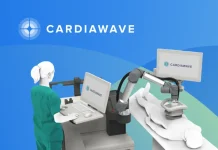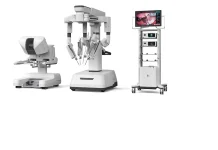Minnetronix Medical has launched MindsEye, making it the first medical device that the contract developer and manufacturer has conceived and commercialized.
St. Paul-based Minnetronix Medical’s MindsEye is the first expandable brain access port on the market. The FDA cleared the device under the 510(k) pathway in August 2020.
The minimally invasive device gives neurosurgeons deep brain access and visualization as they treat strokes, cancer and other conditions. The device features a flexible sheath made of cyclic olefin copolymer (COC) and an aluminum obturator. MindsEye won the Minnesota Technology Association’s TEKNE award for best medical technology and device in 2021.
“Its benefits to neurosurgeons — such as expandability, easier insertion and removal, and transparency that minimizes glare and allows surgeons to see surrounding tissue — are truly unique,” Tulane University neurosurgeon Dr. Johnny Delashaw said in a statement. “The MindsEye expandable port has raised the bar for standard of care in neurosurgery and will improve patient outcomes.”

RELATED: How contract manufacturer Minnetronix Medical decided to make its own medical device
RELATED:
Minnetronix Medical has launched MindsEye, making it the first medical device that the contract developer and manufacturer has conceived and commercialized.
St. Paul-based Minnetronix Medical’s MindsEye is the first expandable brain access port on the market. The FDA cleared the device under the 510(k) pathway in August 2020.
The minimally invasive device gives neurosurgeons deep brain access and visualization as they treat strokes, cancer and other conditions. The device features a flexible sheath made of cyclic olefin copolymer (COC) and an aluminum obturator. MindsEye won the Minnesota Technology Association’s TEKNE award for best medical technology and device in 2021.
“Its benefits to neurosurgeons — such as expandability, easier insertion and removal, and transparency that minimizes glare and allows surgeons to see surrounding tissue — are truly unique,” Tulane University neurosurgeon Dr. Johnny Delashaw said in a statement. “The MindsEye expandable port has raised the bar for standard of care in neurosurgery and will improve patient outcomes.”
RELATED: How contract manufacturer Minnetronix Medical decided to make its own medical device
Why MindsEye matters for Minnetronix Medical and its customers
Minnetronix Medical VP and GM Matt Adams said he’s not aware of another contract development and manufacturing organization that has taken its own product down the entire road to commercialization, from conception through product development and design, pricing, reimbursement and sales forecasting, clinical trials and regulatory clearance, sales training and scale manufacturing.
“You’ve now got a contract development and manufacturing house that lives in the exact same world as its customers and can use that experience to create a better experience for our traditional service customers,” Adams said in an interview.
Mizuho America will distribute the device in the U.S.
“For a partner like Mizuho, we were able to provide them with a complete product, all done, cleared, already been used in humans, along with the salesforce training so that what they get is a complete product dropped in their sales bag, their salesforce trained with no R&D and no regulatory risk,” Adams said. “They’re just immediately into selling mode.”
Mizuho America VP of Sales William Delaney said in a statement, “We now consider Minnetronix a partner for new device ideas and finished products. Since they handled all the steps in creating the MindsEye expandable port, we can concentrate on bringing it to market by leveraging the strength of our distribution channel to accelerate adoption and enhance patient outcomes.”
Minnetronix Medical products in development
Minnetronix Medical has two other products in development: the Minnestronix Neurapheresis Cerebrospinal Fluid Treatment Platform for removing blood from spinal fluid, and the AI-based DepiCT Neuroimaging Platform.
The company has not yet picked commercial partners for those programs, but has just started that process for Neurapheresis and will follow with DepiCT, Adams said.
“We are actually available for the right partners right now,” he said.
RELATED: Freudenberg Introduces HelixTC™ Sanitary Ends for Bioprocessing Applications
Why MindsEye matters for Minnetronix Medical and its customers
Minnetronix Medical VP and GM Matt Adams said he’s not aware of another contract development and manufacturing organization that has taken its own product down the entire road to commercialization, from conception through product development and design, pricing, reimbursement and sales forecasting, clinical trials and regulatory clearance, sales training and scale manufacturing.
“You’ve now got a contract development and manufacturing house that lives in the exact same world as its customers and can use that experience to create a better experience for our traditional service customers,” Adams said in an interview.
Mizuho America will distribute the device in the U.S.
“For a partner like Mizuho, we were able to provide them with a complete product, all done, cleared, already been used in humans, along with the salesforce training so that what they get is a complete product dropped in their sales bag, their salesforce trained with no R&D and no regulatory risk,” Adams said. “They’re just immediately into selling mode.”
Mizuho America VP of Sales William Delaney said in a statement, “We now consider Minnetronix a partner for new device ideas and finished products. Since they handled all the steps in creating the MindsEye expandable port, we can concentrate on bringing it to market by leveraging the strength of our distribution channel to accelerate adoption and enhance patient outcomes.”
Minnetronix Medical products in development
Minnetronix Medical has two other products in development: the Minnestronix Neurapheresis Cerebrospinal Fluid Treatment Platform for removing blood from spinal fluid, and the AI-based DepiCT Neuroimaging Platform.
The company has not yet picked commercial partners for those programs, but has just started that process for Neurapheresis and will follow with DepiCT, Adams said.
“We are actually available for the right partners right now,” he said.






